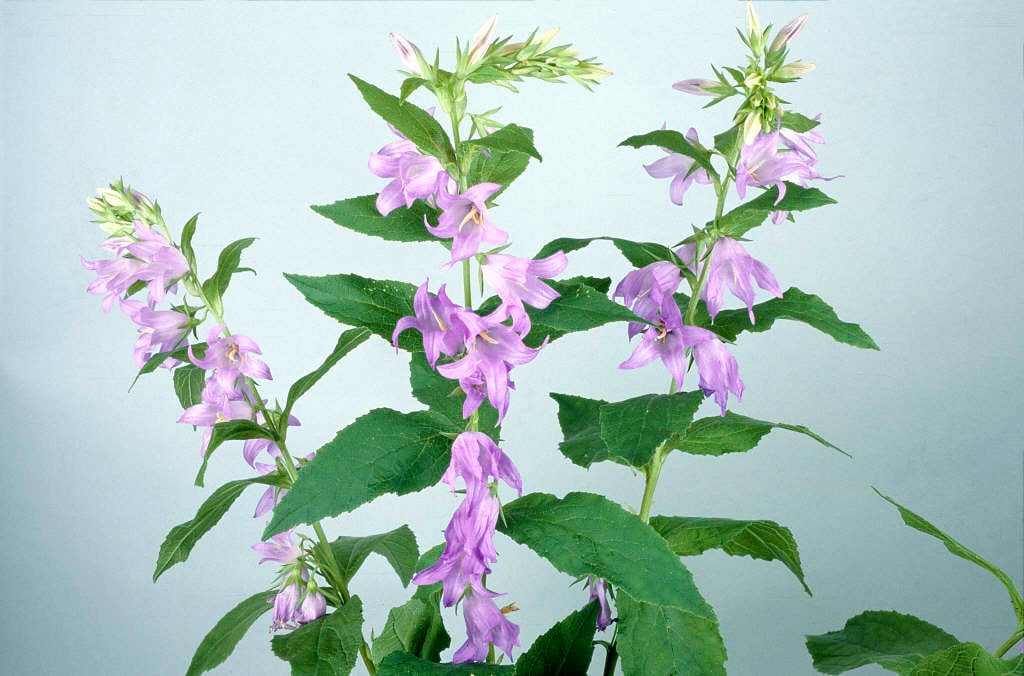Campanula latifolia
giant bellflower
An erect, clump-forming perennial to 1.2m tall, with oval leaves and loose racemes of nodding bell-shaped violet-blue flowers 5cm long in summer
Other common names
broad-leaved bellflowerhaskwort
see morelarge-flowered bellflower
throat root
throatwort
clychlys mawr
Synonyms
Campanula macrantha
Buy this plant
Size
Ultimate height
1–1.5 metresTime to ultimate height
2–5 yearsUltimate spread
0.1–0.5 metresGrowing conditions
Moisture
Moist but well–drained, Well–drainedpH
Acid, Alkaline, NeutralColour & scent
| Stem | Flower | Foliage | Fruit | |
| Spring | Green | |||
|---|---|---|---|---|
| Summer | Blue Purple | Green | ||
| Autumn | ||||
| Winter |
Position
- Full sun
- Partial shade
Aspect
South–facing or North–facing or West–facing or East–facing
Exposure
Exposed or Sheltered Hardiness
H7Botanical details
- Family
- Campanulaceae
- Native to GB / Ireland
- Yes
- Foliage
- Deciduous
- Habit
- Bushy
- Genus
Campanula may be annuals, herbaceous or evergreen perennials, with bell or star-shaped, often blue, flowers in late spring or summer
- Name status
Correct
- Plant range
- Europe to Kashmir
How to grow
Cultivation
Any fertile, moist but well-drained soil in sun or partial shade; the delicate flower colour is best preserved in shade
Propagation
Propagate by seed in containers in a cold frame in spring. Divide in spring or early autumn. Take stem-tip cuttings from new growth after flowering
Suggested planting locations and garden types
- Cottage and informal garden
- Wildflower meadow
- Wildlife gardens
- Underplanting of roses and shrubs
- Flower borders and beds
Pruning
Cut back after flowering to prevent self-seeding and to encourage a second flush of flowers
Pests
Diseases
Powdery mildew and rust may be problematic
Get involved
The Royal Horticultural Society is the UK’s leading gardening charity. We aim to enrich everyone’s life through plants, and make the UK a greener and more beautiful place.